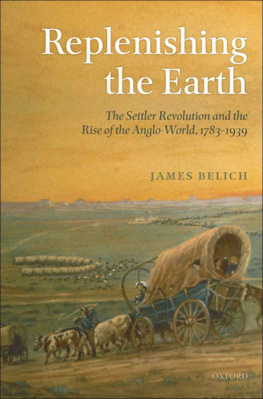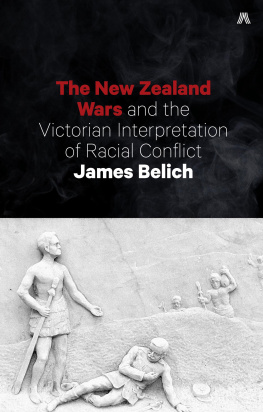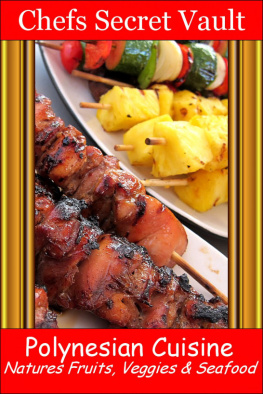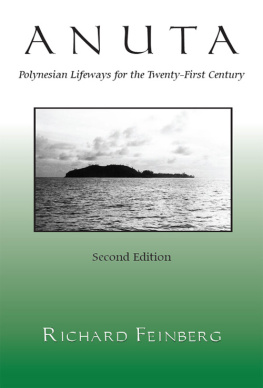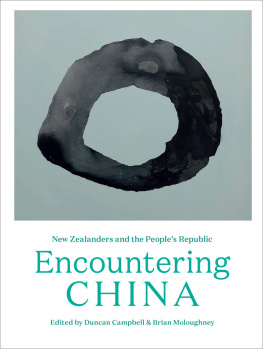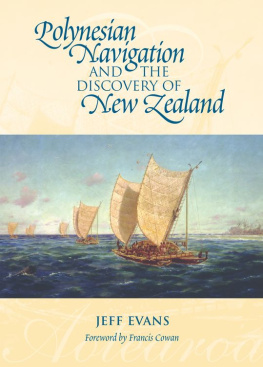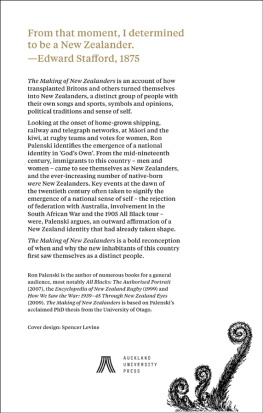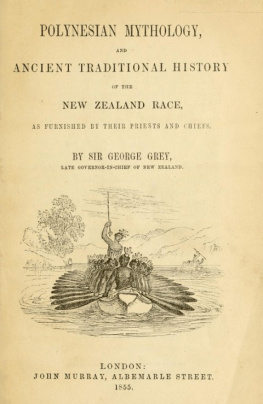James Belich - Making Peoples: A History of the New Zealanders From Polynesian
Here you can read online James Belich - Making Peoples: A History of the New Zealanders From Polynesian full text of the book (entire story) in english for free. Download pdf and epub, get meaning, cover and reviews about this ebook. year: 2007, publisher: Penguin New Zealand, genre: History. Description of the work, (preface) as well as reviews are available. Best literature library LitArk.com created for fans of good reading and offers a wide selection of genres:
Romance novel
Science fiction
Adventure
Detective
Science
History
Home and family
Prose
Art
Politics
Computer
Non-fiction
Religion
Business
Children
Humor
Choose a favorite category and find really read worthwhile books. Enjoy immersion in the world of imagination, feel the emotions of the characters or learn something new for yourself, make an fascinating discovery.
- Book:Making Peoples: A History of the New Zealanders From Polynesian
- Author:
- Publisher:Penguin New Zealand
- Genre:
- Year:2007
- Rating:5 / 5
- Favourites:Add to favourites
- Your mark:
- 100
- 1
- 2
- 3
- 4
- 5
Making Peoples: A History of the New Zealanders From Polynesian: summary, description and annotation
We offer to read an annotation, description, summary or preface (depends on what the author of the book "Making Peoples: A History of the New Zealanders From Polynesian" wrote himself). If you haven't found the necessary information about the book — write in the comments, we will try to find it.
Making Peoples: A History of the New Zealanders From Polynesian — read online for free the complete book (whole text) full work
Below is the text of the book, divided by pages. System saving the place of the last page read, allows you to conveniently read the book "Making Peoples: A History of the New Zealanders From Polynesian" online for free, without having to search again every time where you left off. Put a bookmark, and you can go to the page where you finished reading at any time.
Font size:
Interval:
Bookmark:

MAKING PEOPLES
A History of the New Zealanders From Polynesian Settlement to the End of the Nineteenth Century
JAMES BELICH
PENGUIN BOOKS
Published by the Penguin Group
Penguin Group (NZ), 67 Apollo Drive, Rosedale, North Shore 0632, New Zealand (a division of Pearson New Zealand Ltd)
Penguin Group (USA) Inc., 375 Hudson Street, New York, New York 10014, USA
Penguin Group (Canada), 90 Eglinton Avenue East, Suite 700, Toronto, Ontario, M4P 2Y3, Canada (a division of Pearson Penguin Canada Inc.)
Penguin Books Ltd, 80 Strand, London, WC2R 0RL, England
Penguin Ireland, 25 St Stephens Green, Dublin 2, Ireland (a division of Penguin Books Ltd)
Penguin Group (Australia), 250 Camberwell Road, Camberwell, Victoria 3124, Australia (a division of Pearson Australia Group Pty Ltd)
Penguin Books India Pvt Ltd, 11, Community Centre, Panchsheel Park, New Delhi 110 017, India
Penguin Books (South Africa) (Pty) Ltd, 24 Sturdee Avenue, Rosebank, Johannesburg 2196, South Africa
Penguin Books Ltd, Registered Offices: 80 Strand, London, WC2R 0RL, England
First published by Penguin Group (NZ), 1996
Copyright JAMES BELICH 1996
The right of JAMES BELICH to be identified as the author of this work in terms of section 96 of the Copyright Act 1994 is hereby asserted.
Digital conversion by Pindar NZ
All rights reserved. Without limiting the rights under copyright reserved above, no part of this publication may be reproduced, stored in or introduced into a retrieval system, or transmitted, in any form or by any means (electronic, mechanical, photocopying, recording or otherwise), without the prior written permission of both the copyright owner and the above publisher of this book.
A catalogue record for this book is available from the National Library of New Zealand.
www.penguin.co.nz
ISBN 9781742288222
Contents
For Margaret, Maria and Tessa
PART 1
Making Maori
PART 2
Contact and Empire
In the eighteenth and nineteenth centuries, Europe exploded outward in one of the most phenomenal expansions in human history. This explosion impelled three tides of people on to New Zealands shores. The rst tide, from 1769, came in hundreds; the second, from 1840, in thousands; the third, from 1860, in tens of thousands. The actual and mythical dynamics of these migrations, and the way in which they congealed into a society, are discussed in Part Three. The explosion also impelled European and non-European worlds into each other; the peoples of the latter often found this the biggest challenge they had ever faced. Many are said to have crumpled under the weight of expanding Europe, and some did. But on the whole their responses are the great survival story of modern times.
Europeans found that exploding was not entirely pleasant either. Massive outward expansion was entwined with the massive domestic expansion of an age of revolutions from 1750: in science, industry and religion, and in America and France. New ideas stemming from both expansions corroded old certainties; the old fought back, and the two left great wounds in each other. An ideology of expansion hardened like a scab over these wounds, determined in part by what Europe found in the outside world. The ideology in turn helped determine what Europeans saw and did in the outside world, an ongoing ricochet. Expansion created myths that helped shape the history of expansion.
Expansion and its myths took three main forms: contact, settlement and empire. Settlement, the reproduction of peoples through colonisation, was the subject of Part One, for Polynesians, and will be the subject of Part Three, for Europeans. Contact is intended to mean not just the initial encounter but the continuing process of interaction between Europeans and non-Europeans. It could be very substantial but did not necessarily subordinate. Empire, by denition, did involve the subordination of non-Europeans, though it did not necessarily deprive them of cultural autonomy or identity. Part Two of this book looks at the relationship of contact, empire and their myths with New Zealand history.
Stories of MaoriEuropean relations are usually balanced on the fulcrum of 1840, and there are some good reasons for this. In 1840, Edward Gibbon Wakeelds New Zealand Company began planting its remarkable instant townships, the British colony of New Zealand was set up, and representatives of the British Crown and many Maori tribes signed the Treaty of Waitangi. But important processes began before 1840, and continued after it, and the year is in some respects an articial watershed.
Apart from real and mythical prologues, European ships began visiting New Zealand in 1769. In that year, there were two ship visits; in the 1830s there were something like a thousand. Long-term settlers began arriving about 1800: at rst they came as isolated individuals, living with Maori as Maori; then in camps killing seals and cutting timber; then, from 1814, in stations of missionaries, shore whalers, timber workers, and traders. About 1830, some settlers began clustering into towns or town-like entities, and from that year the settler population at least doubled each decade until the 1870s, reaching half a million in the early 1880s. Generally, Maori welcomed Europe and its things and thoughts until the 1860s, when co-operation collapsed into conict. The settlers, by now self-governing, squeaked home to victory in these wars, with the help of Maori allies, Australian recruits and the British Empire. The level of Maori success, however, dictated caution, and British or neo-British rule was not nally imposed on Maori until the end of the century. The following chapters try to understand contact and empire, and to understand how and why the former became the latter.
PART 3
Making Pakeha
New Zealands rst European community was established in 1795 at Facile Harbour, Dusky Sound, Fiordland. The earliest capital of contact, the scene of New Zealands rst reections on the wonders of progress and civilisation, and of the rst brewing of beer, the rst Pakeha settlement was subsequently abandoned and forgotten. There are no pilgrimages to the site of Pakeha nativity. Perhaps it was because the rst community arrived by accident, had absolutely nothing to do with Maori and was dominated by the desire to get out, not on.
In September 1795, the 800-ton ship Endeavour , under Captain William Bampton, sailed from Sydney for India. The poor state of the ship and stress of weather forced the Endeavour to put in to Facile Harbour, where it promptly sank (later leading to the legend that it was Cooks Endeavour , come home to die). The community thus founded consisted of 244 people easily the largest cluster of Europeans in New Zealand until the 1830s. Some of these people lived at Facile Harbour for 21 months, eventually being rescued by the American whaler Mercury in 1797. Forty-ve men and one woman were escaped convicts, stowed away at Sydney with the connivance of some of the crew. There were also a few ofcers and gentlemen, but they were not the same people.
It was not a happy community. The chief mate argued with the captain soon after landing, and resigned; stores were stolen and thieves ogged within a couple of weeks. The economy consisted in living off capital in the form of the ships provisions, slaughtering seals and tting out boats with which to escape getting out was the shared driving dream. The boats in progress could not t everyone, and Captain Bampton sought to maintain order by changing the selection of those to be marooned. Tempers frayed. The new chief mate, Mr Waine, quarrelled with a passenger, Mr Alms, calling him a Sn Puppy. The mysterious epithet was so foul an execration that Alms challenged Waine to a duel with pistols. The fourth mate, Mr Murry, recorded the exchange.
Font size:
Interval:
Bookmark:
Similar books «Making Peoples: A History of the New Zealanders From Polynesian»
Look at similar books to Making Peoples: A History of the New Zealanders From Polynesian. We have selected literature similar in name and meaning in the hope of providing readers with more options to find new, interesting, not yet read works.
Discussion, reviews of the book Making Peoples: A History of the New Zealanders From Polynesian and just readers' own opinions. Leave your comments, write what you think about the work, its meaning or the main characters. Specify what exactly you liked and what you didn't like, and why you think so.


